1. They Handed Us a Scalpel and a Dead Frog, No Questions Asked
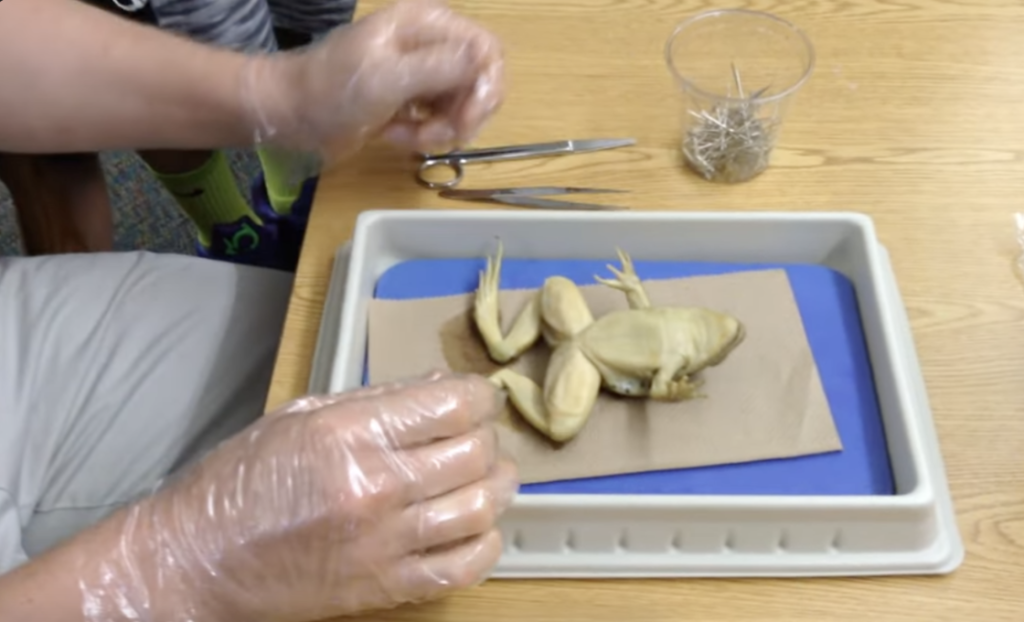
In many schools throughout the 20th century, dissecting animals like frogs, fetal pigs, or even cow eyes was a mandatory rite of passage in biology class. Students were handed scalpels and gloves with little discussion of ethics, and anyone squeamish or opposed on religious or moral grounds had few, if any, options. Consent wasn’t part of the conversation, refusing to participate could mean a failing grade. For many kids, this wasn’t just uncomfortable; it was traumatizing.
Today, these kinds of dissections would face serious scrutiny. Most districts now offer digital dissection simulations or alternative assignments out of respect for animal rights and student autonomy. Many states even have opt-out laws, and schools risk backlash from parents, advocacy groups, and veterinarians-in-training who argue that dissection sends the wrong message about animal life. What once was framed as “science in action” is now viewed as outdated and needlessly graphic by a more ethically conscious generation.
2. The Egg Baby Assignment That Made Zero Sense in Hindsight
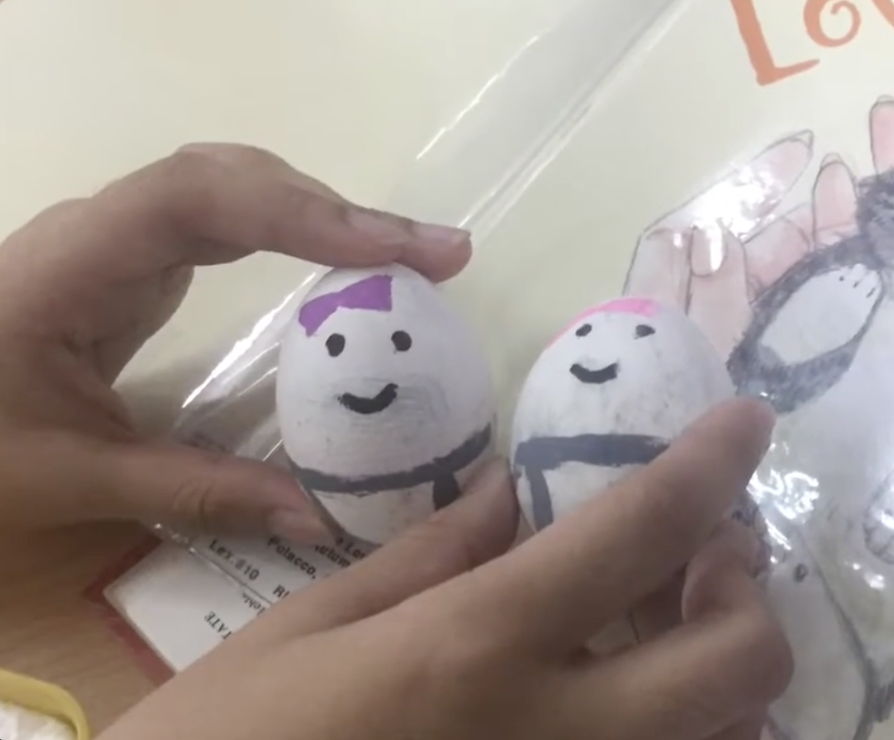
For decades, health and home economics classes tried to teach teenagers the responsibilities of parenting by giving them a raw egg to care for like a baby. The rules were strict: don’t break it, keep it with you at all times, and log your care like a parent might. Some schools upped the ante with sacks of flour or even robotic dolls that cried at night. The idea was to give students a taste of how hard parenting really is, but without any of the emotional, financial, or psychological realities.
While the project was intended to promote responsibility, it’s now considered wildly simplistic and even tone-deaf. Critics argue that it reduces the complexities of parenthood, especially teen parenting, to a weekend craft. It can also shame students from non-traditional families or those who’ve experienced trauma around parenting. Modern curricula focus more on real-life skills and comprehensive sexual education, not gimmicks involving breakfast items. In most schools today, the Egg Baby has officially cracked.
3. They Made Us Argue for Slavery in Class and Called It Learning
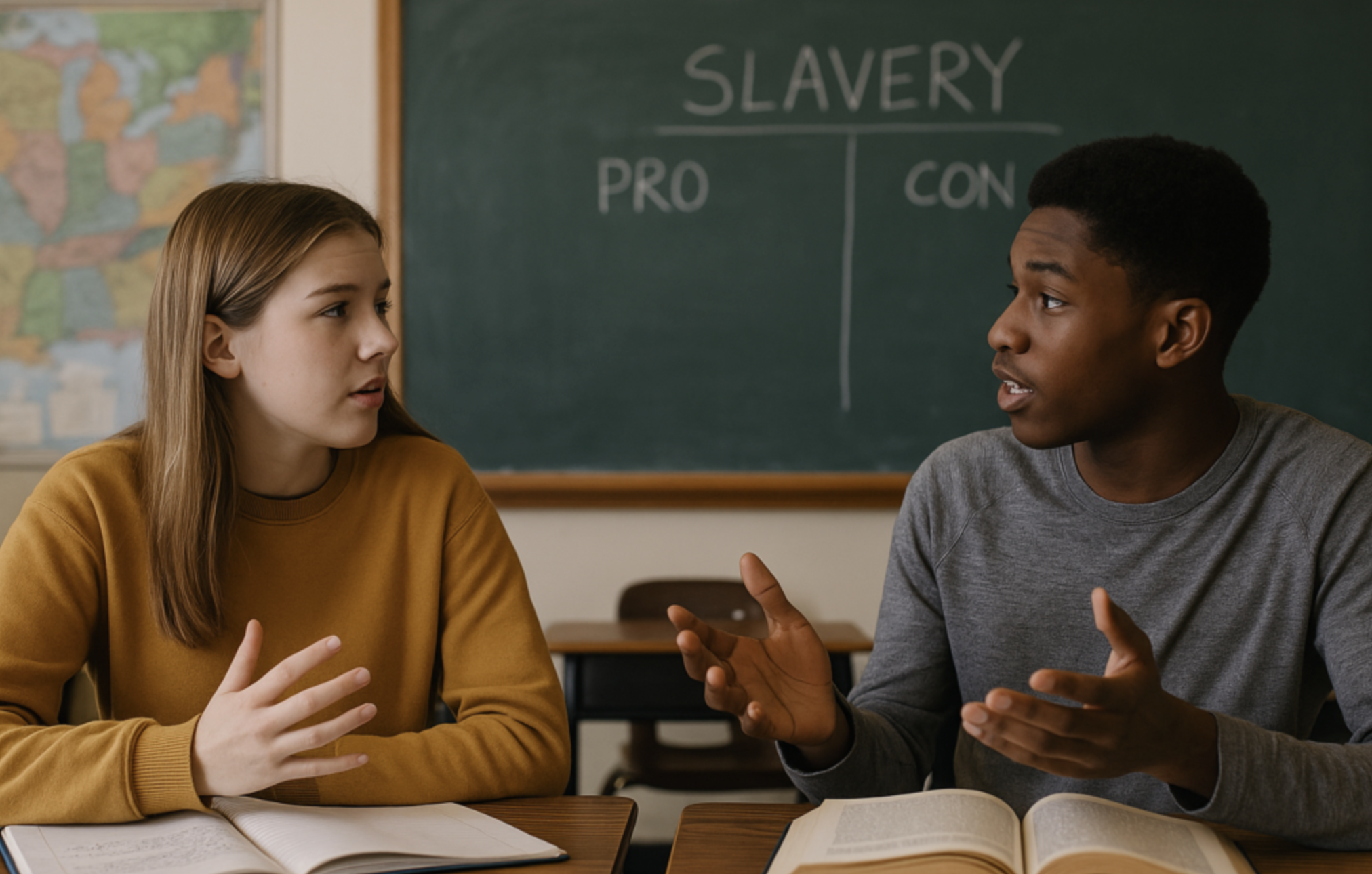
In the name of “critical thinking,” some past classroom assignments asked students to debate both sides of controversial historical issues—including slavery, colonization, and segregation. Students were assigned to argue in favor of positions like slavery’s economic benefits or why segregation “worked,” often without the choice to opt out. These exercises were presented as thought experiments, but they routinely forced students, especially those from marginalized backgrounds, to defend or listen to traumatic justifications for oppression.
Today, this kind of assignment would be immediately flagged as harmful and inappropriate. Framing human rights violations as a matter of opinion minimizes real suffering and can retraumatize students. Schools now emphasize inclusive education and responsible pedagogy, teaching students to analyze systemic injustice without legitimizing the viewpoints of oppressors. Most educators recognize that some perspectives, especially those that dehumanize, shouldn’t be entertained in a debate format. What once was called “academic rigor” now reads more like institutional insensitivity.
4. This Health Class Project Gave a Generation of Girls Eating Issues

In the 1980s and ’90s, it was common for health teachers to assign projects that required students to count calories, track their meals, or even log their weight and body measurements. Some assignments went so far as to calculate ideal weight ranges or compare body mass indexes (BMI) in front of the class. These projects were often positioned as lessons in “healthy living,” but for many teens, especially girls, they sparked shame, body obsession, or even eating disorders.
Today, educators and mental health professionals widely condemn these types of assignments. With rising awareness around body image, eating disorders, and the toxic effects of diet culture, schools are shifting toward more holistic, inclusive health education. Discussions now center on intuitive eating, mental wellness, and fitness as empowerment rather than aesthetics. Forcing students to quantify their bodies is not only outdated but dangerous. What used to be seen as a practical health lesson is now recognized as a trigger for lifelong harm.
5. Imagine Being Forced to Defend a Serial Killer in 10th Grade

Mock trials were once a staple in civics and government classes, often involving students taking on courtroom roles to better understand the legal system. While some cases focused on historical figures or fictional characters, others involved defending real-life criminals, including murderers, abusers, or controversial political figures. In some classrooms, students were randomly assigned roles and expected to argue on behalf of individuals whose actions were disturbing or traumatic—regardless of personal comfort or background.
In recent years, this kind of role-playing has come under fire for its insensitivity. Many schools have pulled back from forcing students to adopt perspectives that could glorify violence or retraumatize peers who’ve experienced abuse. Educators are now more mindful of psychological safety and the emotional toll such assignments can take. Legal simulations still exist, but with more thoughtful content and built-in opt-outs. What was once considered immersive learning now raises red flags about emotional boundaries and consent in the classroom.
6. Teachers Assigned That Book? Yep, and We Had to Present on It

Once upon a time, some teachers took pride in assigning books that pushed boundaries, from Lolita to The Catcher in the Rye. Students were expected to read and analyze literature regardless of its sexual content, violence, or offensive language. In other cases, books banned in other districts were assigned as acts of rebellion or intellectual freedom. But not all students, or their parents, were prepared for explicit material being treated as mandatory reading without context or content warnings.
More recently, schools have become far more cautious when selecting books for the classroom. Assignments are now vetted for age-appropriateness, cultural sensitivity, and potential trauma triggers. While the goal of encouraging critical thinking through literature hasn’t disappeared, educators are more likely to offer alternate titles or send home permission slips. The pendulum has swung from shock value to student-centered learning. These days, a surprise assignment on a provocative novel could lead to board meetings, parental outrage, and even lawsuits.
7. We Literally Had to Say How Much Our Parents Made in Class
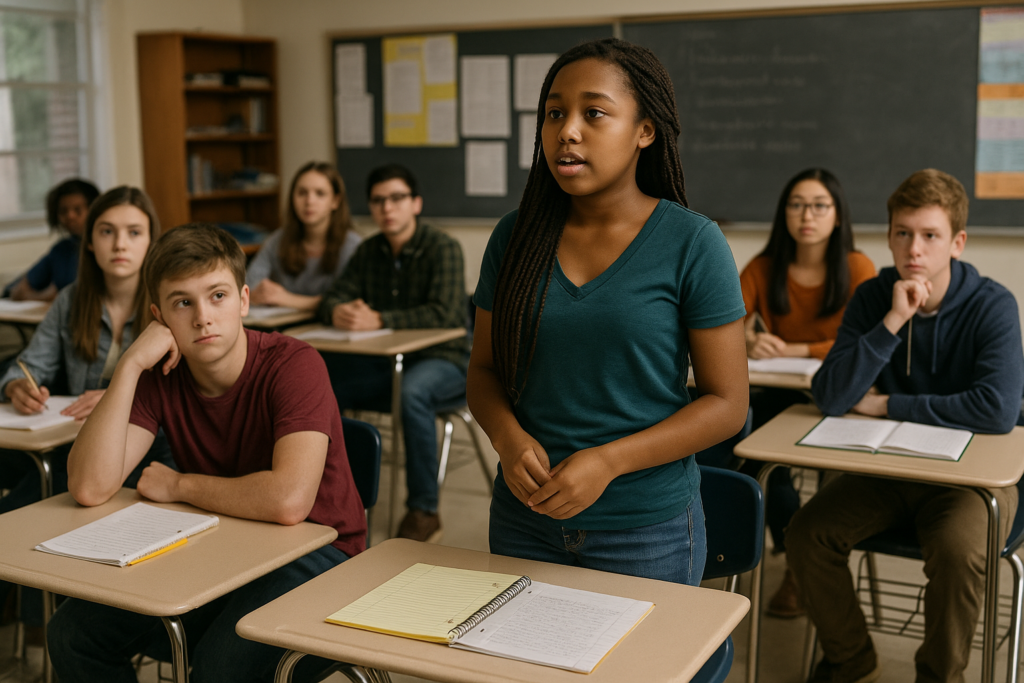
In decades past, teachers often asked students to complete autobiographical assignments that included listing their parents’ occupations, household income, religious affiliations, or cultural backgrounds. These details were sometimes displayed on posters, shared aloud, or compared during class discussions about economics or diversity. While the intent may have been educational, the outcome often exposed students to embarrassment, judgment, or bullying—especially those from low-income families or minority religions.
Today, educators are far more cautious about protecting students’ privacy. Personal information that once seemed harmless is now recognized as sensitive and potentially stigmatizing. Assignments are crafted with a stronger emphasis on consent and boundaries, and many schools explicitly prohibit asking students to disclose financial or religious data. With growing awareness around equity and inclusion, there’s a clear understanding that no child should have to choose between a grade and their dignity. The classroom is no longer treated as a census form.
8. We All Had to Make Santa Crafts—Whether We Celebrated or Not
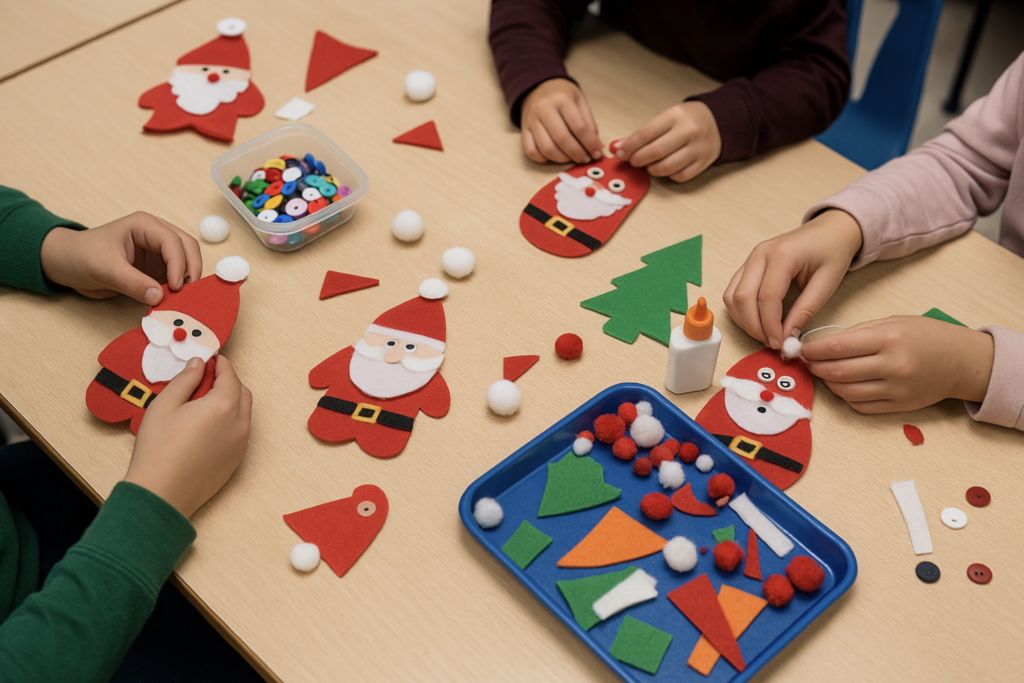
Throughout the 20th century, many public school classrooms turned into mini winter wonderlands each December, complete with nativity scenes, Christmas carols, and Santa-themed crafts. Participation was usually mandatory, with students expected to make ornaments, write letters to Santa, or perform in holiday plays with overtly Christian themes. Children from non-Christian families were often told to “just have fun with it,” even if the activities conflicted with their beliefs or made them feel excluded.
As society has grown more religiously diverse, public schools have shifted toward secular or inclusive holiday programming. Teachers now face clear guidelines on separating religious instruction from classroom celebration, and many schools offer opt-out options or alternatives for students. Celebrations tend to emphasize winter or cultural themes rather than specific religious ones. What used to be seen as cheerful tradition is now approached with greater sensitivity, ensuring that no child feels pressured to participate in someone else’s faith expression.
9. Girls Were Told to Be Nurses. Boys? CEOs. Totally Normal Then

Career day used to be a charming tradition where students dressed up as their “future selves,” complete with job titles and props. But in practice, these assignments often reinforced outdated gender norms. Boys were encouraged to portray firefighters, doctors, or businessmen, while girls were steered toward roles like nurses, teachers, or homemakers. Some assignments even required students to write essays on jobs that aligned with traditional gender expectations, limiting imagination and ambition for many.
Over time, educators and parents began to challenge the narrow messaging embedded in these projects. Schools now aim to present a wide spectrum of careers to all students, regardless of gender. Guest speakers are more diverse, and children are encouraged to explore roles based on interest, not societal stereotypes. The emphasis has shifted from playing dress-up to truly expanding possibilities. What once seemed like harmless fun is now seen as a missed opportunity to break barriers instead of reinforcing them.
10. We Had to Rank Each Other by Looks, For a Grade

In the name of hands-on learning, some psychology or social studies classes used to assign experiments that involved classmates as unwitting test subjects. One common exercise was peer ranking, where students rated one another on attractiveness, popularity, intelligence, or athletic ability. Others involved obedience tests, social exclusion games, or personality assessments shared aloud. These projects were often framed as harmless simulations but could easily cross into humiliation or bullying.
Educators have since recognized the serious emotional harm these assignments can cause. Modern teaching methods prioritize ethical guidelines and emotional safety, especially when interpersonal dynamics are involved. Today’s students learn about classic psychological studies through discussion, observation, and well-designed simulations that don’t exploit their peers. Consent and confidentiality are key components of any classroom activity now. Assignments that once blurred the line between learning and cruelty have been largely replaced by exercises rooted in empathy and respect.
11. They Took Us to Prison and Let Inmates Scream in Our Faces
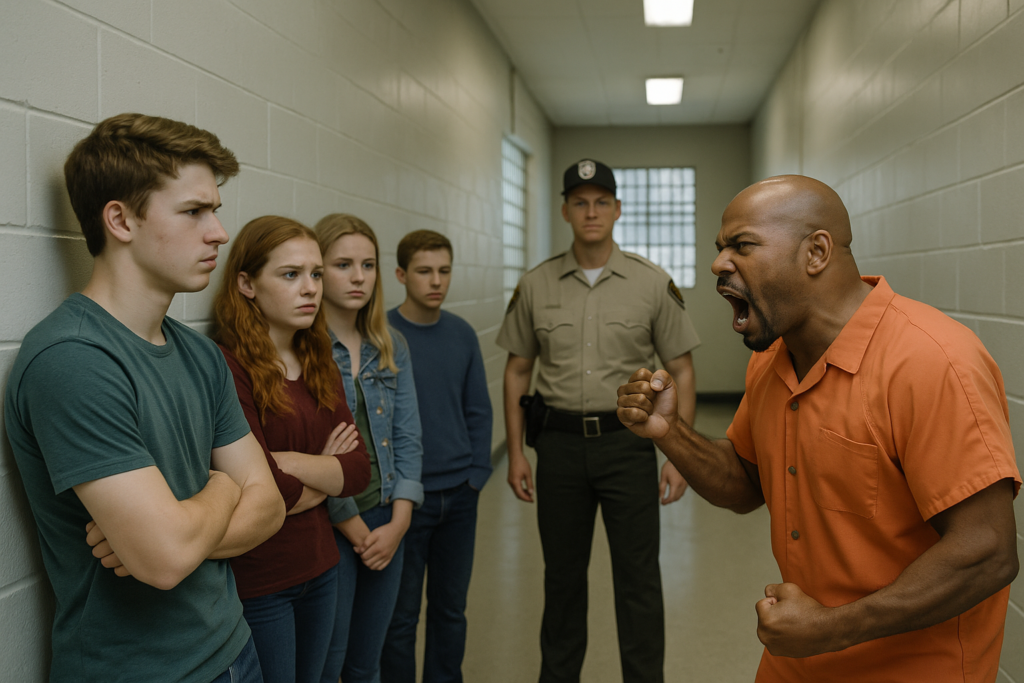
Starting in the 1970s and popular through the ’90s, some schools sent at-risk teens—or entire classes—on field trips to prisons to be yelled at by inmates as a supposed deterrent to crime. These “Scared Straight” programs were meant to shock students into good behavior, with the belief that exposing them to harsh prison realities would build character or prevent delinquency. In many cases, the students were minors, and the content was graphic, aggressive, and deeply disturbing.
Since then, research has overwhelmingly shown that these programs not only fail to reduce bad behavior but can actually make things worse. Educators and psychologists now consider such trips emotionally damaging and inappropriate for school settings. Interventions today focus on mentorship, restorative justice, and positive reinforcement rather than intimidation. The tough-love theatrics of “Scared Straight” have largely been replaced by evidence-based approaches. What once passed as a life lesson is now seen as traumatic and legally risky.
12. Our “Personal” Letters to Congress? The Teacher Wrote Half of It

In civics or government classes, students were often assigned to write letters to elected officials, sometimes as part of a broader lesson on advocacy or democracy in action. But in many cases, teachers heavily influenced the content, steering students toward a particular viewpoint or even editing the letters before they were sent. Rather than encouraging personal beliefs or open discourse, these assignments occasionally turned into exercises in political persuasion—or subtle indoctrination—under the guise of civic education.
Educators today are far more cautious about mixing personal ideology with classroom instruction. While encouraging civic engagement remains a goal, students are now given more autonomy to research, explore, and form their own positions. Assignments are typically framed around nonpartisan analysis or critical thinking rather than lobbying. With increased scrutiny on curriculum bias, teachers are expected to serve as facilitators rather than influencers. What was once seen as a proactive learning tool now carries ethical concerns about academic freedom and manipulation.
13. Get in Trouble, Drop and Give Me 20—That Was a Real Rule
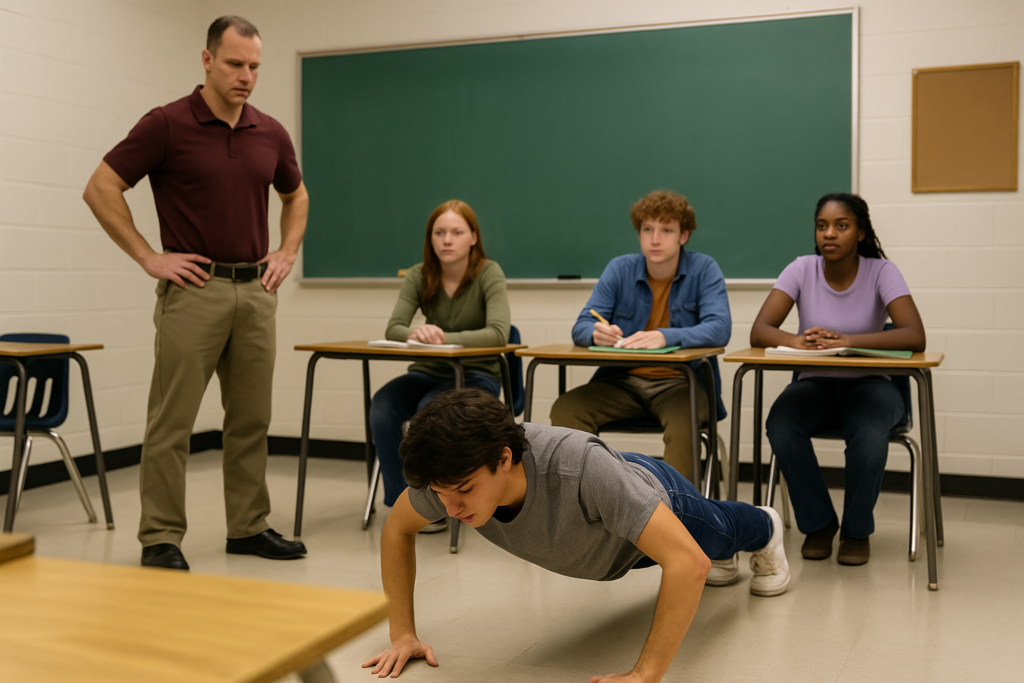
There was a time when misbehaving students might be ordered to run laps, do push-ups, or perform wall sits as punishment, often in front of the class or during gym. This approach was especially common in physical education and sports settings, where discipline was tightly linked to physical exertion. Coaches and teachers believed this would build respect, deter future disruptions, and instill toughness. Instead, it often led to shame, exhaustion, and resentment.
Modern education and sports psychology have turned sharply away from this practice. Today, using physical activity as punishment is widely discouraged and even banned in many school districts. Exercise is meant to be a positive, health-promoting activity, not a form of discipline. Teachers are trained in behavior management strategies that focus on reflection, accountability, and support—not public embarrassment. What was once considered character-building is now seen as a misuse of authority and a deterrent to students developing a healthy relationship with fitness.
14. Extra Credit for Bringing in Classroom Supplies

In many schools throughout the 1990s and early 2000s, teachers, often underfunded and desperate, offered extra credit to students who brought in classroom essentials like tissues, paper towels, printer paper, or dry erase markers. While it may have seemed like a harmless incentive, this practice unfairly advantaged students from wealthier households and quietly penalized those who couldn’t afford to contribute. It blurred the line between academic performance and financial means, creating an uneven playing field in the classroom.
With rising awareness of educational equity, most schools have put an end to this kind of rewards system. Districts now emphasize fair grading policies and encourage community-wide supply drives or budget-based solutions instead of relying on students to foot the bill. Teachers are discouraged from tying grades or privileges to financial contributions, no matter how small. What was once seen as creative problem-solving is now viewed as unintentionally discriminatory, and a reminder of the deeper funding issues many schools still face.
15. We Dressed Up Like “Indians” for Thanksgiving and Had No Idea

For decades, schools across the U.S. celebrated Thanksgiving with themed days where students dressed up as Pilgrims and “Indians.” Kids made paper feather headdresses, painted their faces, and reenacted meals or “friendly” exchanges between settlers and Native Americans. In many cases, these activities were presented with cartoonish simplicity, ignoring the violence and colonization behind the real history. Similar cultural dress-up assignments also happened during units on world cultures, with students mimicking traditional clothing or accents for classroom presentations.
What was once treated as a fun and educational tradition is now widely condemned as offensive and reductive. Educators, historians, and Indigenous activists have called out these assignments for perpetuating stereotypes and erasing real cultural experiences. Most modern schools now avoid costumes entirely and focus instead on accurate, age-appropriate discussions around history and identity. The headdresses and construction-paper tomahawks may have seemed harmless at the time, but they’ve become symbols of how casually schools once mishandled cultural representation.
16. Your Name on the Board Meant Shame. We All Just Accepted It
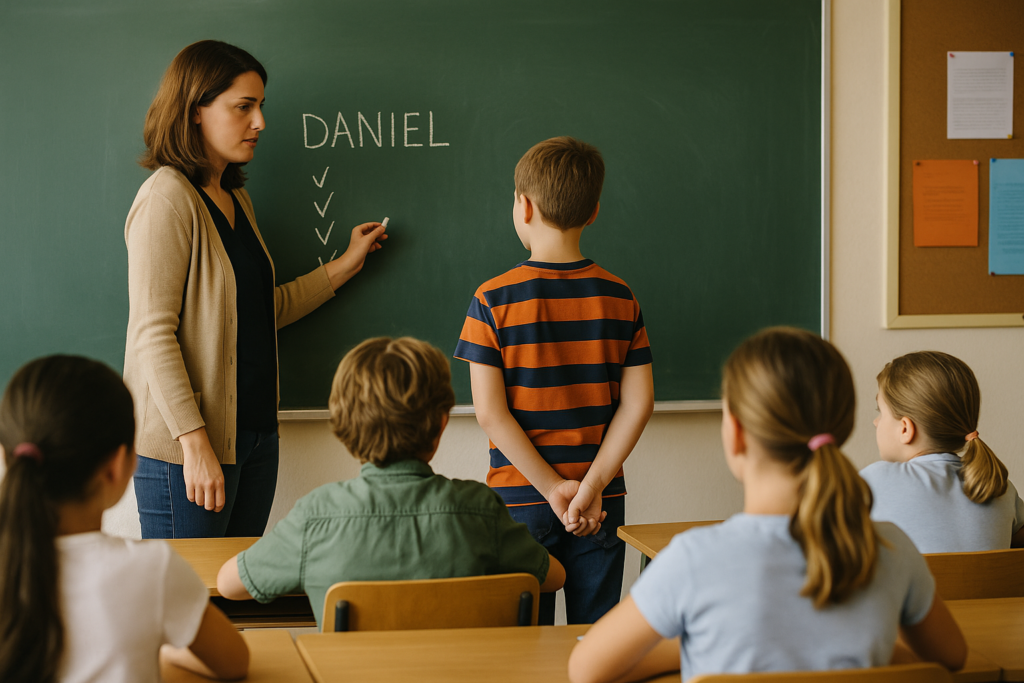
Back in the day, getting your name written on the chalkboard was a mark of shame—and it usually didn’t stop there. Teachers often added tally marks for each additional offense, and students might be told to sit in a “bad desk,” stand against the wall, or serve “silent lunch” in front of their peers. The method was rooted in public accountability, but for many kids, it just led to anxiety, humiliation, or classwide teasing. It was especially harsh for shy students or those with learning or behavioral differences.
Today, most educators see public shaming as counterproductive and even harmful. Schools now emphasize private redirection, social-emotional learning, and trauma-informed discipline practices that support, rather than punish, struggling students. Writing names on the board as a warning signal is largely seen as outdated and cruel. What once felt like a routine part of childhood discipline is now understood to be a damaging tactic that prioritized compliance over understanding.
17. Spelling Bees Where You Got Publicly Eliminated? Yeah, That Was School

Spelling bees used to be a near-universal classroom experience, often culminating in a high-pressure competition where students were eliminated one by one in front of their peers. While some kids thrived on the spotlight, others dreaded the moment they had to spell a word aloud, especially if they stumbled early. There was no room for error or second chances, and for struggling readers, English language learners, or kids with performance anxiety, the experience could be deeply embarrassing.
While spelling bees still exist, most classrooms have moved away from making them mandatory or publicly eliminative. Educators now understand that competition isn’t always the best motivator and that public failure can do long-term damage to a student’s confidence. Modern approaches focus more on collaborative language games, inclusive literacy exercises, and creating a love of words rather than a fear of mistakes. That dreaded “ding” after a misspelled word has gone quiet in many classrooms—and most kids aren’t missing it.
So… What Were They Thinking?

Looking back, it’s hard to believe just how far teachers and administrators were allowed to go in the name of “education.” From frog guts to public humiliation to pretending to be married at 15, these assignments weren’t just outdated, they were sometimes downright harmful. But if there’s a silver lining, it’s this: most of us survived it, learned from it, and now get to shake our heads in disbelief (and maybe laugh a little too).
Education has come a long way, and today’s classrooms are, thankfully, more focused on emotional safety, inclusivity, and consent. Still, these old-school projects live rent-free in our memories. Which ones did you have to do? And which one still makes you cringe?
This story, 17 School Assignments That Would Never Be Allowed Today was first published on dailyfetch.net.


